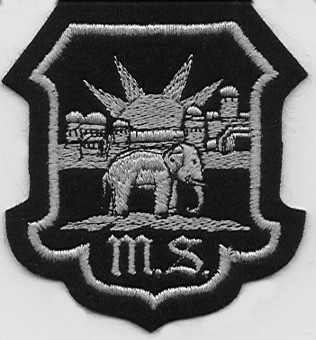History - About Milton High School from 1910
Milton School started life
on the 25th July 1910, named after Sir William Milton, however the
buildings situated on Borrow Street Bulawayo, are now home to
Milton
Junior School. Milton and
Eveline first state-maintained high
schools in Rhodesia. Milton and Eveline were officially opened on the
same day by Sir William Milton, his wife Lady Eveline, Sir Charles
Coghlan and the Mayor and Town Council.
It was in September of 1927 that some 300 boys and staff moved to
Milton's present home, which is situated between the suburbs and the
racecourse. However it wasn't until the 1st June 1928 that the School
was formally opened by Sir John Chancellor as "The Milton School". The
school's colours are plumbago (dark grey) and Oxford blue with the
school crest based on an early version of the City of Bulawayo's crest,
whereas the motto is Greek and translates as "Quit ye like men".
In 1925 initailly there were three houses, Pioneer and Charter for
boarders and Oppidans for Day-scholars. Then the school was divided into four houses; Charter (boarders),
Pioneer (boarders), North Town and South Town, however due to the
dominance of the "boarders" four new houses were introduced in 1938,
they were; Birchenough, Borrow, Fairbridge and Heany.
At the start of 1950 Milton had 420 boys, but by the end of 1951 this
figure rose to 581 creating a "housing crisis", two classrooms were
built in 12 days along with two marquees which were erected on the open
space between the main block and the dining hall. In 1953, after ten
years of planning and fund raising (£5000 from State Lotteries and £1000
from the Baron family as a memorial to their father), Milton's swimming
pool was opened at a cost of £17,500
In 1954 there were 644 pupils, by 1957 this figure had risen to over
700, a year later there were in excess of 900. With over 200 boys per
house four new games houses were created; Brady, Chancellor, Malvern and
Rhodes.
In 1961 Milton had 1150 boys, which made it the largest school in the
Federation. Malvern and Brady Houses were dropped and the boarding
houses of Charter and Pioneer were re-established once again. 1961 also
saw the completion of the new economics block, commerce department with
a staff room, a double story administration block and the official
opening of the Department of Sixth Form Studies by the Minister of
Education D.B.Goldberg.
During 1962 rooms were built to house the woodwork shop, metalwork shop,
technical drawing office, storerooms and construction of locking cycle
sheds, a rifle range, even stands were erected on the playing fields.
The Old Miltonians were relocated into new premises just across Third
Street from Milton High School. Funds were raised to enable the first
part of a new clubhouse to be built in 1964 and by 1970 there were
facilities for rugby, hockey, cricket, basketball, baseball, bowling and
tennis.
Houses: Birchenough, Borrow, Chancellor, Charter,
Fairbridge, Heany, Pioneer and Rhodes
The first five headmasters of Milton were:
E.D. DE BEER (1910-1924)
COLONEL J.B. BRADY (1925-1930)
H.G. LIVINGSTON (1930-1941)
L.R. MORGAN (1941-1942)
W. GEBBIE (1943-1946)
Very early days -
the beginning
By the
end of 1894 work was underway on a stand in Abercorn Street and the new
church was dedciated in the name of St. John Baptist on 10 March 1895.
The work of equiping the new chucrh proceeded slowly throughout the rest
of the year and in 1896 the Matabele Rebelllion brought development and
progress at St. John's to a standstill.
St. Johns was becoming financially insecure, by the beginning of 1910 it
was £850 in debt. A resolution was approved by the Legislative Assembly
for the Western District and when the London of the B.S.A Company gave
Milton permission to build separate boys' and girls' school in Bulawayo,
the fate of St. John's was sealed. St. John's closed its doors in June
1910, and the government assumed responsibility for the debt and the
entire enrollment of St. John's was transferred to the new government
schools. Milton and Eveline thus became the first state-maintained high
schools in Rhodesia. The original buildings in Abercon Street
became St. Gabrial's home when the new St. John's was built in Rhodes
Street.
The original St. John's chapel in the 1890's with foundation
stone 1894 and current pictures today
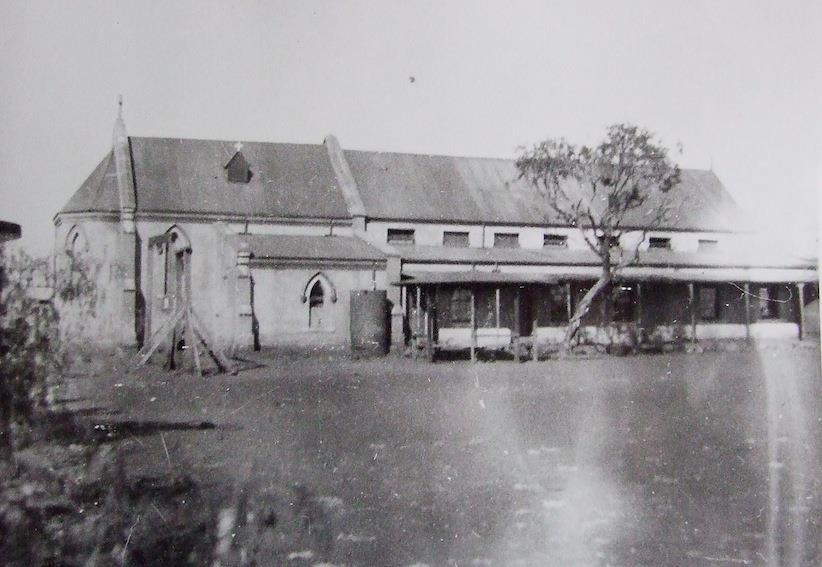
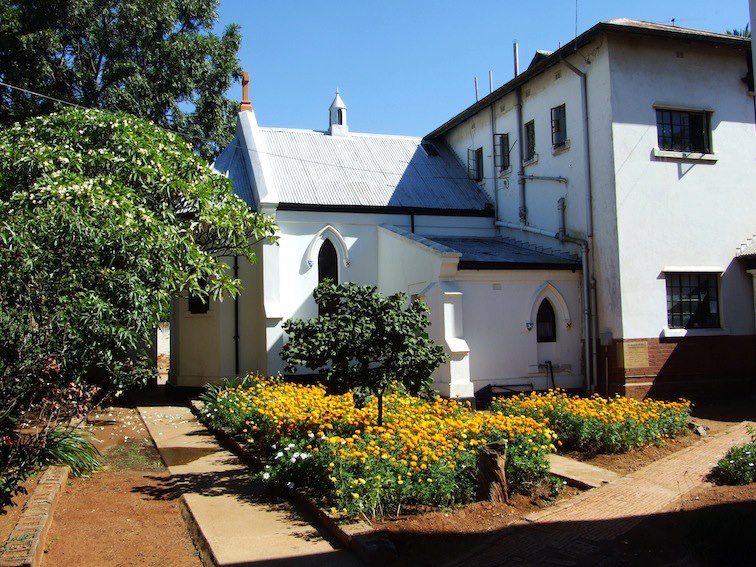
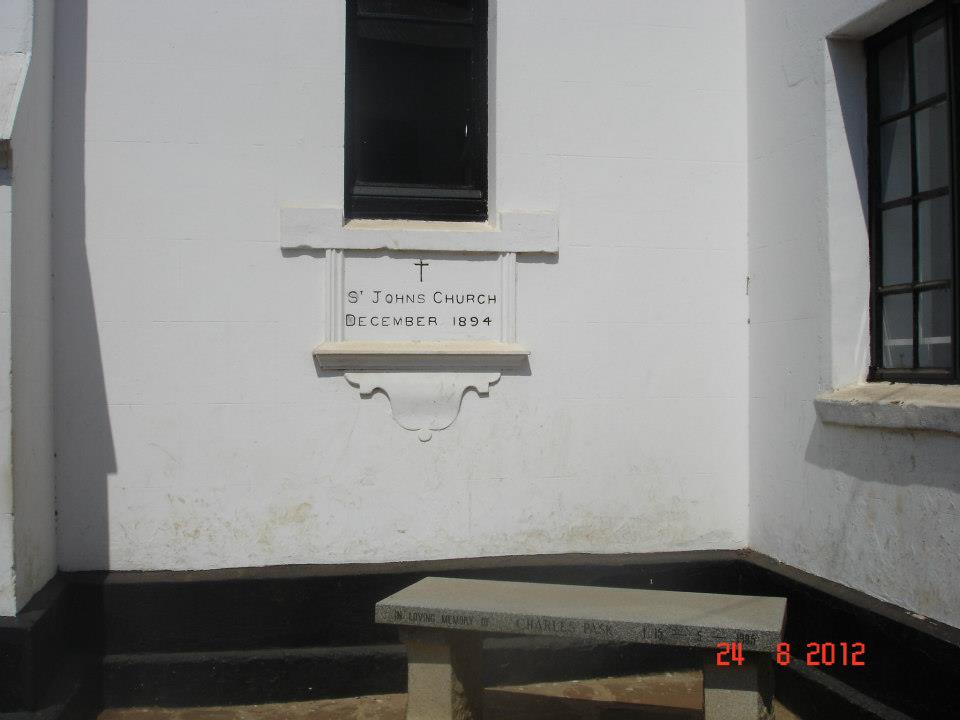
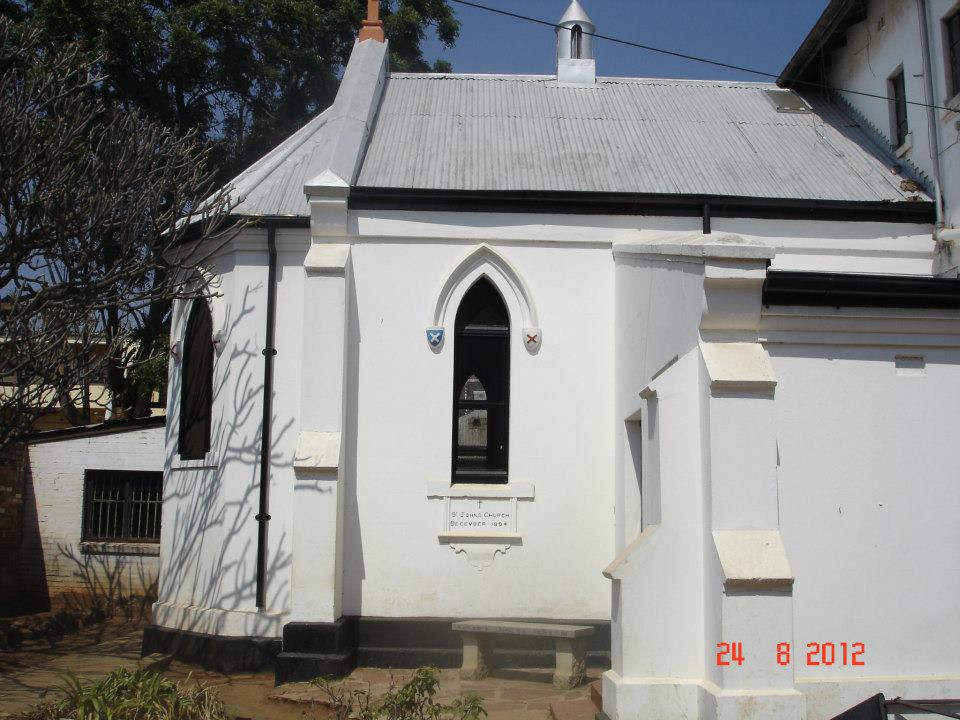
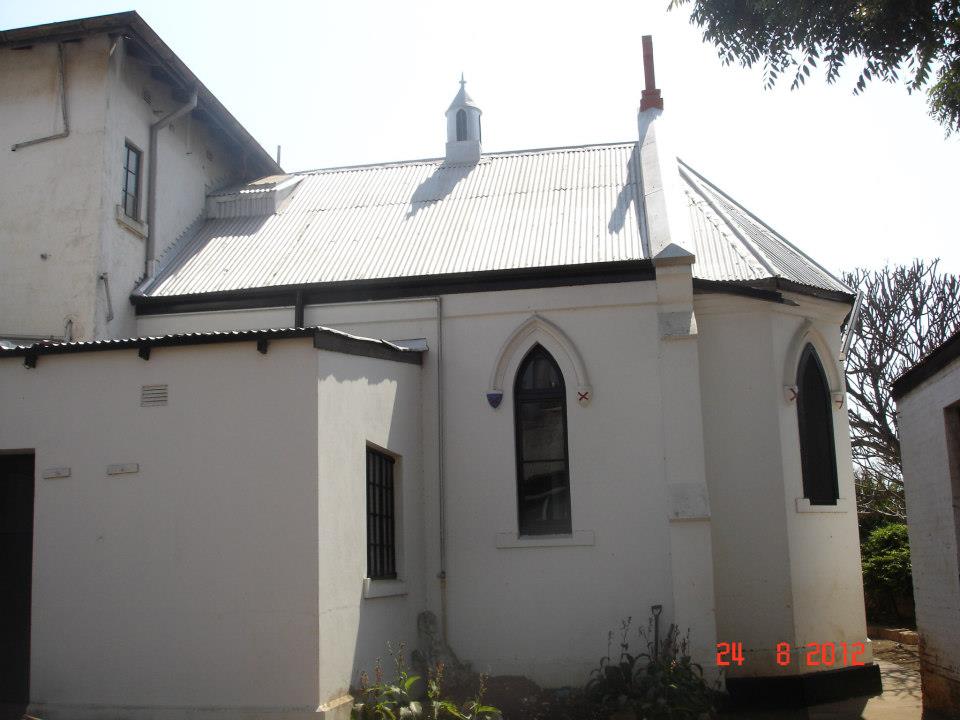
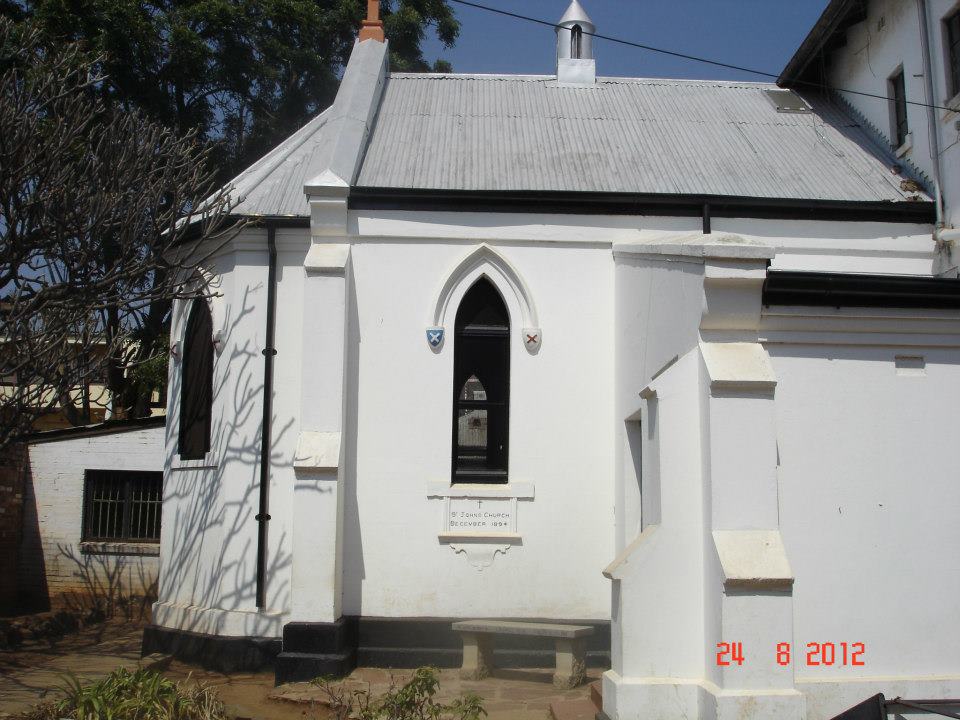
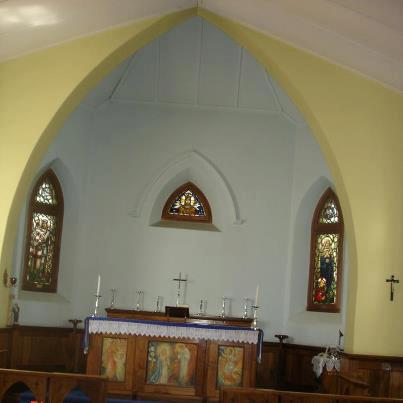
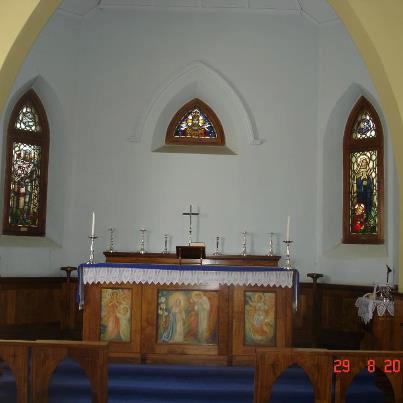
THE HOSTELS - 1978
In 1978 the two boarding houses, Charter and Pioneer, changed their
system yet again. At one time in the history of Milton, boarders had
been mixed with day scholars in games houses, doubtless to the benefit
of the day scholars. Later, the two houses had been combined as a single
games house, Boarders.
In 1978 they returned to this position. Pioneer was allocated the task
of introducing boarders to the Milton way of life and Charter was to be
the House where they matured into the rigid backbone of the School. 1978
was a very difficult year with seniors from Pioneer moving into Charter
and juniors from Charter moving across to Pioneer House. Loyalties were
strained and boarders searched for an identity. This year the changes
are behind us. The juniors of Pioneer and the seniors of Charter seem
happier with their peers. The two houses ran smoothly and continue as a
back, and often the only, supporting group at inter-house activities.
Boarders are conservative and stoutly defend their own traditions and
those of Milton. They are the custodians of the Milton system, an
ever-present reminder to the people of Bulawayo of the true image of a
Miltonian.
NEW HOUSE NAMES 1987
From the beginning of 1987 Milton's five day game houses will be renamed
in honour of the school's first five headmasters (Boarders, the sixth
house, will remain Boarders) and each will meet in the quadrangle that
bears the appropriate name; quads are already named after the first four
headmasters and the Sixth Form quad/car park area will in future be
known as the Gebbie Quad.
BIRCHENOUGH HOUSE - LIVINGSTONE
BORROW HOUSE
- BRADY
FAIRBRIDGE HOUSE - MORGAN
RHODES HOUSE
- GEBBIE
HEANY HOUSE
- DE BEER
Flags through the history of Milton
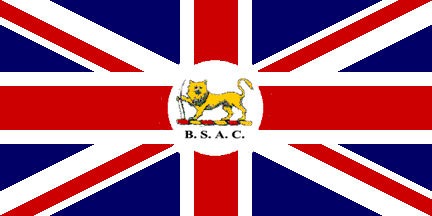
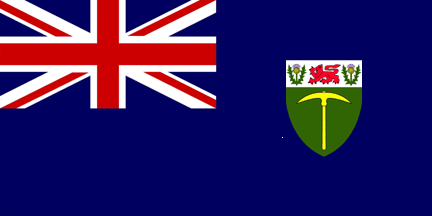
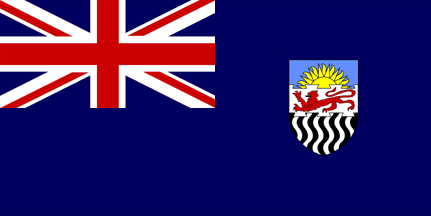
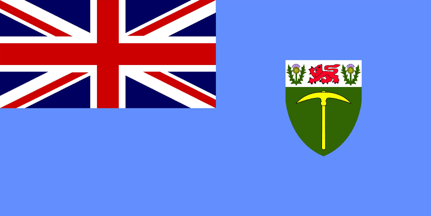
1910-1923 1923-1953 1953-1963 1964-1968
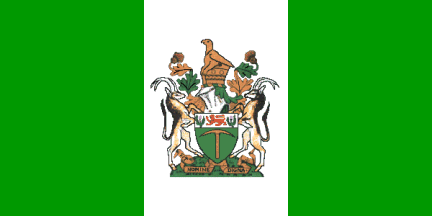
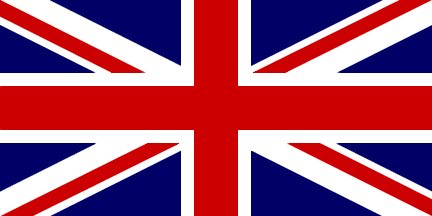
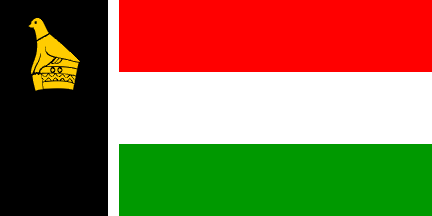
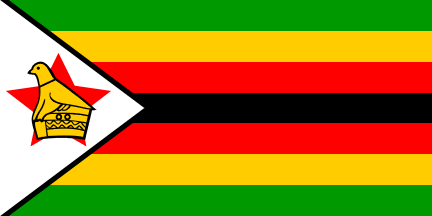
1968-1979 1979 1980 1980-2015
